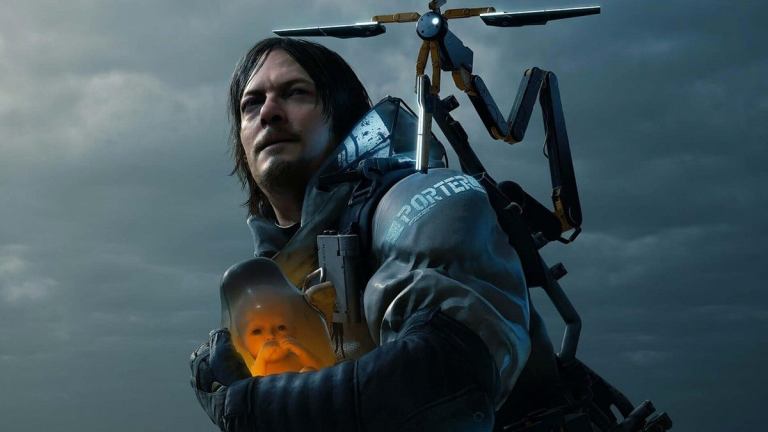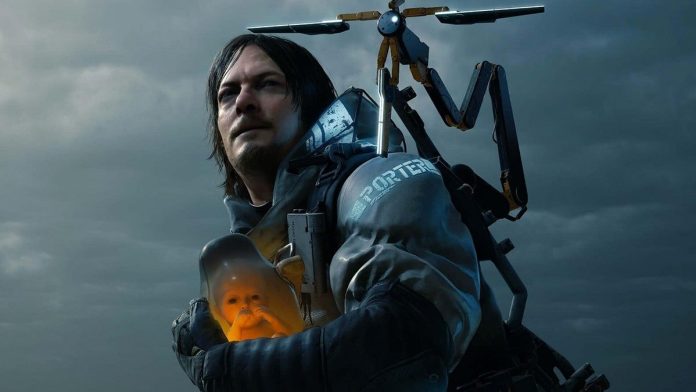 By Chris Freiberg | |
By Chris Freiberg | |

Making video games very much requires a team effort, but there are still a few creators whose vision and innovation is unmistakable. These are directors who are household names almost on par with film legends like Steven Spielberg and Guillermo del Toro. And in the video game world, there is perhaps no bigger name than Hideo Kojima.
While mostly known for his work on the Metal Gear Solid series, Kojima has led development of more than a dozen titles during his legendary career, receiving universal acclaim for his work. With the impending release of his latest game, Death Stranding 2: On the Beach finally here, we figured it was time to look back at these titles. These are the games directed by Hideo Kojima ranked from worst to best.
Honorable Mention: Boktai: The Sun is in Your Hand (2003)
Boktai wasn’t actually directed by Kojima, so it doesn’t quite qualify for this list, but Kojima did design it and act as producer, and his fingerprints can clearly be seen all over it. Essentially a stealth action game (like most of his titles), the pull of Boktai is the light sensor included on the Game Boy Advance cartridge. You need to actually go outside during the day to charge the solar weapons in the game used to slay the undead, which makes it much easier to play.
Yeah, it’s gimmicky but also really fun, and given the current trajectory of handheld gaming, we’ll probably never see another game quite like it. Even if emulators can take away the need for the light sensor, it’s still worth tracking down a GBA and an original cartridge to experience this one as it’s meant to be played.
Kojima’s very first game is by no means bad, it’s just a little dated, which of course isn’t surprising given that it came out in 1987. And hey, something has to go at the bottom of this list. The graphics and music is actually still pretty good, and the stealth gameplay is easy to pick up. This is, after all, the foundation that pretty much all stealth games are still built around.
It’s just that it’s easy to get stuck at times. Some clues about what to do next are almost impossible to figure out without looking them up. And if you do use a guide, it’s a pretty short game. Still, the game is now readily available in the recently released Metal Gear Solid: Master Collection, so it’s worth checking it out there.
What’s really impressive about Metal Gear 2: Solid Snake is just how much more advanced it is over its predecessor, even though it also released on the underpowered MSX2. Enemies can now spot you more readily and follow you between screens and there are a lot of options to evade and distract them as well.
Then there’s the story, exploring the nature of warfare which is a common theme for Kojima games, is surprisingly mature for its time. Despite the constraints of being made for an eight-bit computer in 1990, Metal Gear 2 felt years ahead of its time and is truly one of the best games of the era.
10. Policenauts (1994)
More than 30 years after its initial release, Policenauts remains Kojima’s only game never officially released in the West. That has nothing to do with its quality though. In fact, it features some of the best writing of any of the games he’s directed. Best described as a visual novel or an interactive movie, the game is a hard science fiction story about a police officer returning to Earth after more than 20 years in cryosleep.
It’s kind of like Blade Runner but with a lot of Lethal Weapon sprinkled in for good measure. A Sega Saturn version was announced for North America in 1996 but apparently the way it was programmed made the translation from Japanese to English too difficult and costly. While there’s certainly still some interest in seeing the title here, it doesn’t seem like that’s going to happen any time soon.
Every single Metal Gear Solid game that Kojima has directed has been hailed as a masterpiece, so it gets a little tricky to give them any sort of ranking. Still, Metal Gear Solid 4 is just a bit below the other titles in the series. While currently stranded on the PlayStation 3, the game is still an incredible showcase for what that console was capable of, with stunning graphics that still hold up well today.
The problem is that Guns of the Patriots is a little too self-indulgent. Kojima wanted this to be the most epic of conclusions to Solid Snake’s story, which meant tying up every last loose end in the convoluted story. There are some very unnecessarily long cutscenes here to the point that they get in the way of the game’s pacing. It’s still a great finale. It could just use a little trimming.
Metal Gear Solid 2 is still somewhat divisive among fans. When it was released, a lot of people wanted a next-gen version of Metal Gear Solid, which had come to define the first PlayStation. And that’s exactly what they got at the start of the game. Then comes the infamous protagonist switch. It turns out that Solid Snake isn’t actually the star of the game. Instead it’s Raiden, a character who was brand new at the time.
But once you accept Sons of Liberty for what it is, and not what you might have wanted it to be, it’s one of the most prescient games ever made. Released in 2001, years before social media took over our lives, it predicted the rise of echo chambers, how they could be used to manipulate public opinion, and even warned of the dangers of AI. Even in 2025, there are few games that feel as relevant.
Yes, we’re going to lump Ground Zeroes together with The Phantom Pain, as it’s really more of a prologue than an entirely separate entity, and the gameplay is largely the same. Luckily, the gameplay really is the star here. The Phantom Pain and Ground Zeroes feel like titles that pushed the longstanding ideas of the series forward. There are numerous ways to tackle each mission, and somehow, the enemy AI always seems to adapt to your choices. These are the most open ended Metal Gear games to date.
But what’s really incredible about The Phantom Pain in particular is just how good it is given that it appears to have been rushed through the final phases of development due to the crumbling relationship between Kojima and publisher Konami. If the game was closer to Kojima’s vision, it might even be a little higher on this list.
6. Snatcher (1988)
Another visual novel, Snatcher was the first title that really allowed Kojima to explore the close relationship between video games and cinema. The tale of robot “Snatchers” that kill and replace humans was remarkably mature for the era, and didn’t even change much for the Sega CD release in North America, which was a common practice at the time.
Yes, it can get a little tiresome to play a game that’s largely a text-based affair, but the writing is so strong, and the cyberpunk atmosphere is so moody, that it’s easy to get hooked on this one. It’s just a shame that it’s not more readily available on modern platforms, especially with a completed English language translation.
To be perfectly frank, the PSP was home to a lot of half-assed spinoffs of major franchises. And initially Kojima planned to step back as director from Peace Walker. We’re glad he stayed on though, because the final result is an interesting mix of ideas from the later Metal Gear Solid titles, along with a design that takes full advantage of the strengths of a portable.
Gameplay is somewhere between the fourth and fifth MGS games, focusing on shorter missions, but with the addition of co-op for most of them. Yes, it gets a little grindy toward the end, but at least it’s playable in smaller chunks. And it’s really worth checking out to better understand Big Boss and his motivations in the entire saga.
4. P.T. (2014)
I can think of exactly one time that a demo that was only officially available for a few months has been called one of the greatest and most influential games of all time, but P.T. is just that amazing. Playing with perspective, and the nature of time, P.T. (short for “Playable Teaser”)is meant to constantly disorient the player. It is remarkably simple in its gameplay too, only allowing for walking and zooming in on the scenery. Yet it’s also consistently terrifying and unnerving as you never quite know what the game will throw at you next.
All of this was meant to get people excited for a Kojima-directed Silent Hill game starring Norman Reedus as the protagonist. Unfortunately, Kojima and publisher Konami parted ways a few months after P.T. was released exclusively for the PSN. The game was canceled, and you can’t even redownload P.T. if you didn’t snag it for the few months it was available in 2014 and 2015. But from the ashes of P.T., we ended up getting an even better Kojima game starring Norman Reedus…
3. Death Stranding (2019)
Death Stranding is admittedly not a game for everyone. Certainly it contains some stealth elements but it’s not fully a stealth game like other Kojima titles. There’s multiplayer, but it’s also unlike his past work. There’s a lot of walking from place to place, but it’s not really fair to call it a walking simulator. The best description is that this is a wholly unique action-adventure game with invisible enemies, the need to balance the packages, and the all important “bridge baby” along for the ride.
The story can be borderline incomprehensible at times, even if you’re paying close attention, and yet there are unmistakable themes. It especially hit home after the COVID pandemic began just a few months following the game’s release. Death Stranding may not click for you, but if it does, it’s one of Kojima’s best and most addictive games yet.
You can actually divide the video game industry into everything that came before and after Metal Gear Solid. Before Kojima’s PlayStation 1 masterpiece, video games tended to lack in the presentation department. You’d get told where to go, maybe a little cutscene would play (usually with poor voice acting), and you’d be on your way. But Metal Gear Solid was among the first titles that really invested in voice acting and direction to prove games could be just as cinematic as the best Hollywood movies.
There’s a real sense of urgency to Snake’s mission, and some pitch perfect pacing. This is Kojima as a storyteller at his most disciplined. And then there was the gameplay. Much of it was evolved from the first 2D Metal Gear titles, but the little meta touches, like needing to look up a Codec frequency on the back of the game’s case, or switching controller ports to defeat Psycho Mantis, demonstrated a level of ingenuity and understanding of the medium that’s still far beyond most developers today.
Most Kojima games explore near future settings and question the trajectory of technological advancement. And yet, his very best game is set in the 1960s during the Cold War and strips away the sci-fi trappings for a powerful tale about loyalty, sacrifice, and the nature of patriotism. In Snake Eater, you play as Big Boss back when he was known as “Naked Snake,” and indeed this is Metal Gear Solid stripped down to its bare essentials.Instead of relying on high-tech gadgets, you’re crawling through the jungle, camouflaging yourself and hunting wildlife to stay alive. It’s a raw and memorable experience, and the best possible prequel to the entire Metal Gear Solid. Maybe one day Kojima will top this epic, but after two decades it still remains his very best game.
